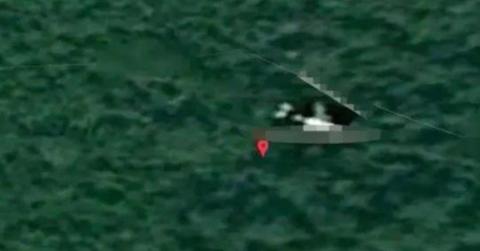Doomed Flight MH370 Found? Possible Clues to Crashed Plane Emerge in Jungle, on Beach

Malaysia is considering resuming the search for missing Flight MH370.
Tech expert Ian Wilson claims to have found the wreckage of the Malaysia Airlines MH370 plane on Google Maps.
According to Knewz.com, Wilson believes the remains of the missing aircraft are located deep in the Cambodian jungle.
Wilson stated, "Measuring the Google sighting, you're looking at around 69 meters, but there looks to be a gap between the tail and the back of the plane. It's just slightly bigger, but there's a gap that would probably account for that," per the Mirror.
Since Wilson’s claims have emerged, the Bureau of Aircraft Investigations Archives admitted that they could not rule out the Google Maps sighting — first discovered in 2018 on Google Earth — as part of the missing plane.
This is not the only alleged sighting of Flight MH370’s debris. Knewz.com noted in another article that items found washed up on a Madagascan beach were thought of as belonging to the missing aircraft. The reason for the latter was that they were made from composite materials similar to those used on Boeing 777 aircraft.
Additionally, academics in Florida believe that temperature data obtained from barnacles found on debris believed to belong to the doomed flight may provide answers.
According to the experts, analyzing the temperature data may help track the movements of the sea creatures and provide insights into the crash location.
- Expert Says Recovered MH370 Debris Shows 'How' and 'Where' Doomed Malaysia Airlines Plane Crashed Decade Ago
- Location of Crashed Malaysian Airlines Flight MH370 Pinpointed, New Search Will Be Quick, Avionics Expert Says
- Mystery Solved? New Search for Missing Malaysia Flight MH370 Predicted to Find Wreckage Within Weeks
Gregory Herbert, an associate professor of evolutionary biology at the University of South Florida, took the lead in this study after it was triggered by photos of plane debris - specifically a flaperon, washing up on Reunion Island in the Indian Ocean a year after the plane disappeared.
Herbert stated, "As soon as I saw that, I immediately began sending emails to the search investigators because I knew the geochemistry of their shells could provide clues to the crash location."
Barnacles grow their shells daily, meaning that the chemistry of each layer can be determined by the temperature of the water at the time and by extension offer clues to location.
Never miss a story — sign up for the Front Page Detectives newsletter. Be on the scene the moment news breaks.
The flight, carrying 239 people, disappeared on March 8, 2014, while en route from Kuala Lumpur to Beijing during a handover between Malaysian and Vietnamese air traffic controllers. During this relay, the aircraft’s transponder is said to have shut down.
For nearly a decade afterward, investigators poured an extensive amount of effort into understanding what led to its disappearance and demise and even released a 1,500-page report. Be that as it may, experts are still unable to determine what happened to the aircraft.
Later reports suggest that the plane’s demise was due to something ominous.
As Knewz.com reported previously, “Forensic analysis on the debris discovered on the Antsiraka Peninsula South Beach in Madagascar and believed to be from missing Malaysia Airlines Flight 370 indicates the pilot of the doomed plane deliberately plunged it and its 239 victims to a watery grave.”
Become a Front Page Detective
Sign up to receive breaking
Front Page Detectives
news and exclusive investigations.
